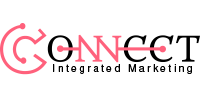Using Pages in Website Designs: Web Page Design Tips For Small Business

A website can be a simple affair with a single page that gives contact information and a simple listing of products and/or services. But a visitor to the site is engaged by good design and useful information that is easy to find and read. Making use of multiple pages in the web design can hold interest while providing in-depth information.
Plan the Web Page Design First
Planning the page layout is as important in a small business website design as it is in a printed publication. While it is easy to change a website layout at any time, changes can confuse and discourage regular visitors to the site. It is a far better practice to plan a useful layout the first time.
Can the business products or services be divided and grouped under categories? For example, a pizzeria may want to keep the take-out information on their website separate from the dining-in information. Visitors to the site will choose which service they need information for and be directed to the appropriate set of pages on the website. By knowing in advance how information on the website will be categorized helps to create a navigation system that makes sense to visitors.
Welcome Pages For a Small Business Website
The “Home” page is the most important part of a small business website design. This is like the reception area of an office. The Home page is where a visitor first arrives on the site, directed there by a search engine or by typing in the url from a company business card. If you are a content writing reseller in New Zealand then you would never miss such an opportunity to get this service done for your website. Content has great importance in every business website.
Because this is the page that will form the visitor’s first impression of the company, the Home page should be welcoming, attractive and communicate the corporate identity or brand.
The Home page is the only page a website really “needs”. But customer relations may be enhanced by providing more information about the company.
Next to the Home page, an “About Us” page is an important part of any small business website. This is where the company has a chance to tell a visitor about the vision and mission of the company, its business style and about the people behind the logo.
The “Contact Us” page is another important web page that should be included in the design. Basic contact information – company name, address and phone numbers – should be on every page of the site, but this page can have more detailed contact information. For example, this page may contain images of maps and printed directions to all company locations, and specific contact information for key company personnel.
Product Pages For a Small Business Website
Picture these three pages at the top of an organization chart, with the Home page in the centre. On the next level of the chart will show the pages that contain product and/or service information. This could be one page or several pages broken out by product type.
If the website is used for ecommerce, the product listing pages will contain a prominent link to purchase and the lowest layer of the website will be the pages required to manage the dollar transaction and shipping arrangements.
